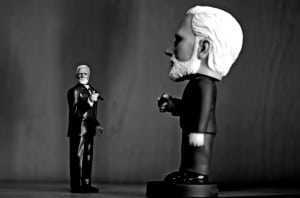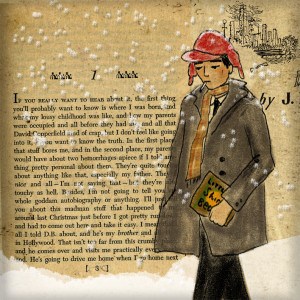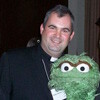If you’ve been a student in a Catholic school over the past half-century and you’ve spent any time studying the documents of Vatican II in English, chances are you used an edition of those documents edited by Walter Abbott, S.J. It’s a paperback with a red cover, it’s probably falling apart a little bit these days (let’s just say that America Press didn’t splurge on quality paper), and it no doubt has someone else’s notes and underlines in it. A few weeks ago, while preparing for my Master of Divinity comprehensive exams (which, ahem, is not to say I started preparing a few weeks ago… do my professors read this?), I realized an interesting fact about my own weatherbeaten Abbott text: It’s my mother’s copy.
I don’t know how I ended up with it, so we’re going to assume charitably that she lent it to me years ago and I intend to return it some day (this is clearly a lie; I have written all over it, and some slob spilled Top Ramen on the explanatory notes). I know that she was not the original owner, because her name on the inside cover is preceded by those of three other students at her undergraduate college, all signed with the immaculate penmanship of young women trained in the Palmer Method by a series of Catholic nuns. I’m not sure if my mother knew those denizens of rooms 301, 302, and 316, though one of them had a name that is letter-perfect for Vatican II and the movements it inspired in the church: Chris Liberator. Don’t you want to look her up and introduce her to Leonardo Boff?
During Vatican II, Abbott himself was an associate editor at America magazine, a fact I like to point out to my pals because it’s the same job I had from 2007-09. I also point out to my increasingly annoyed pals that I may have lived in the same room Abbott occupied in the 1960s (he died in 2008). I do this not only ad majorem Jim gloriam, but because I always took great pride in being a small part of the impressive tradition of churchmen who have lived at America House, the residence attached to America magazine on 56th Street. At my first evening in the house years ago, I met Jesuits whose names I had seen and heard endless times—Vinnie O’Keefe, Roger Haight, Tom Reese, Drew Christiansen, and many more—all within five minutes of each other. Then I turned around from shaking their hands and Jim Martin had taken my seat.
But what does all this have to do with Vatican II or my mother? Did we all read 200 words into this essay just to discover that this has been an elaborate setup to take a potshot at Jim Martin? While I do not reject the worthiness of such an effort on principle, my point is otherwise: that in our lives as Christians we inherit and enter into a tradition that both buttresses and takes us beyond our own faith in the Eternal Word, Jesus Christ, the one who lived and died as a human being and rose on Easter morning. Those familiar phrasings of our belief, which have sustained many through life and into eternity, are no longer the sole expressions that sustains us. We post-moderns jump in and out of millennia (yes, that’s the plural) of expressions of human joy, sorrow, rage, and perplexity in our lives as Christians. These days our every intellectual endeavor and every emotional wandering is of a piece with those of countless others who have gone before us… and not just fellow Christians even. Or, to quote that pesky Vatican II again, for us who are followers of Christ, “Indeed, nothing genuinely human fails to raise an echo in [our] hearts.” (That’s Lumen Gentium I [Editor’s note: umm… it’s actually Gaudium et Spes chapter one… but we’re sure you passed comps anyway…] in case my professors actually are reading this).
I would have underlined that very passage from Lumen Gentium Gaudium et Spes in my Abbott copy, but someone, preemptively proving my very point, had starred and underlined it already. Almost half a century ago. In fact, the previous owners of my copy (or, at least, their professors) seem to agree with me more often than not when it comes to where and when the pen should come out and an exclamation point, an underline, a circle is needed. (They tend not to agree when a cool dinosaur should be drawn running down the page, but perhaps a future owner will be appreciative). Time and again, I found myself simpatico with another generation in what I wanted to emphasize and graft onto my own understanding of my Christian Catholic faith. The second I opened my copy and began to grapple with the text, I joined them in a still-ongoing tradition. The life of the community of believers, to paraphrase Augustine, is a beauty ever ancient and ever new.
Which brings me to my next point: St. Augustine. I have been teaching a class this semester at the University of San Francisco on religious memoir, and our very first text was St. Augustine’s Confessions. It’s a hell of a read (though the only underlined sections in my used copy were the sexy bits), and instructive for the modern mind for a thousand and one reasons. One doesn’t get too far into the text before encountering a somewhat intriguing confession from the Doctor of Grace, concerning his own self-understanding as a young man in a time of crisis: “I had become a problem to myself, like a field a farmer works with much sweat and great toil.”
What’s this? How can someone born in the fourth century express so succinctly the problem of our own Age of Anxiety? I had become a problem to myself. Just as writers and literary scholars often point to the Confessions as the birth of memoir, psychologists and social theorists sometimes point to this very line from Augustine as the birth of modern self-consciousness and navel-gazing and angst, the notion of deliberate self-reflection upon one’s own interaction with the world, the notion that one should “do some work” on one’s psychological well-being, digging up the rocks and seeding the furrows of one’s inner life. Augustine sounds like Freud sounds like J. Alfred Prufrock sounds like Holden Caulfield sounds like Dorothy Day sounds like Elizabeth Gilbert sounds like you and sounds like me. But to simply label his confession “modern” and move on is to miss the point.
It’s not that Augustine is modern, it’s that we are ancient. We are in the tradition and of the tradition, and we have the same humanity and the same interlocutor in our attempt to understand our humanity as he. And if we’re not careful, and we remove that line of Augustine from its context, then we forget to whom it’s addressed. It’s part of a dialogue with God.
I think the psychologists and social theorists are wrong about Augustine, by the way (truth be told, I think they’re wrong concerning just about anything), because one can find endless examples in the Old and New Testaments of exactly the same expression of anxiety, centuries before Augustine. What of Jeremiah’s lament that he cannot but do what God commands him even though it torments him, or St. Paul’s cri du coeur in Roman’s that “I do not understand what I do. For what I want to do I do not do, but what I hate I do”? But that we can read those passages in our post-modern way is further proof of the way we can jump in and out of the tradition, supplementing our belief in that risen Word of God with a thousand and one spiritual and emotional and historical companions. We can realize that Qoheleth was right, there is nothing new under the sun.
We hear echoes of ourselves in the ruminations and writings and edits of a fourth-century scoundrel-turned-saint, a first-century itinerant tentmaker-turned-preacher, a twentieth-century priest-turned-editor with the delightfully Catholic name of Abbott, or a twentieth-century college student with the even more delightful name of Chris Liberator. All four of those characters shared something else rather obvious in common as well, they all believed that Jesus Christ is Lord and Savior (please note that I have left Jeremiah off the list, since if I claim that Jeremiah, who lived six centuries before Christ, believed that Jesus Christ is Lord and Savior, I will truly fail my comprehensive exams). Of course, it’s easy enough to say such a thing, that Jesus is Lord—we all know a million and one terrible people who say it every day, and those same folks are often the ones who say it loudest—and quite another thing to live it out. And it’s in our fumbling efforts at living it out that we… well, it’s just then that we find that we inevitably become a problem to ourselves. And to others.
But isn’t that why the books are underlined, why the echoes are still audible, why there is such a thing as a tradition in the first place? We are helped and we help each other across time and space in the living out and understanding of a discipleship made onerous by our habit of becoming a problem to ourselves and to others. We can call it what we want—the communion of saints, the People of God, salvation history, the body of Christ, the priesthood of all believers, etc, etc, etc.—but the point remains the same. Our tradition is a community that has addressed this problem we become to ourselves over the last three thousand years, and we inherited this tradition from Church fathers, from our own fathers and mothers, in all the products of human ingenuity. And it is our own attempts to understand our faith that turns our inheritance into participation.





